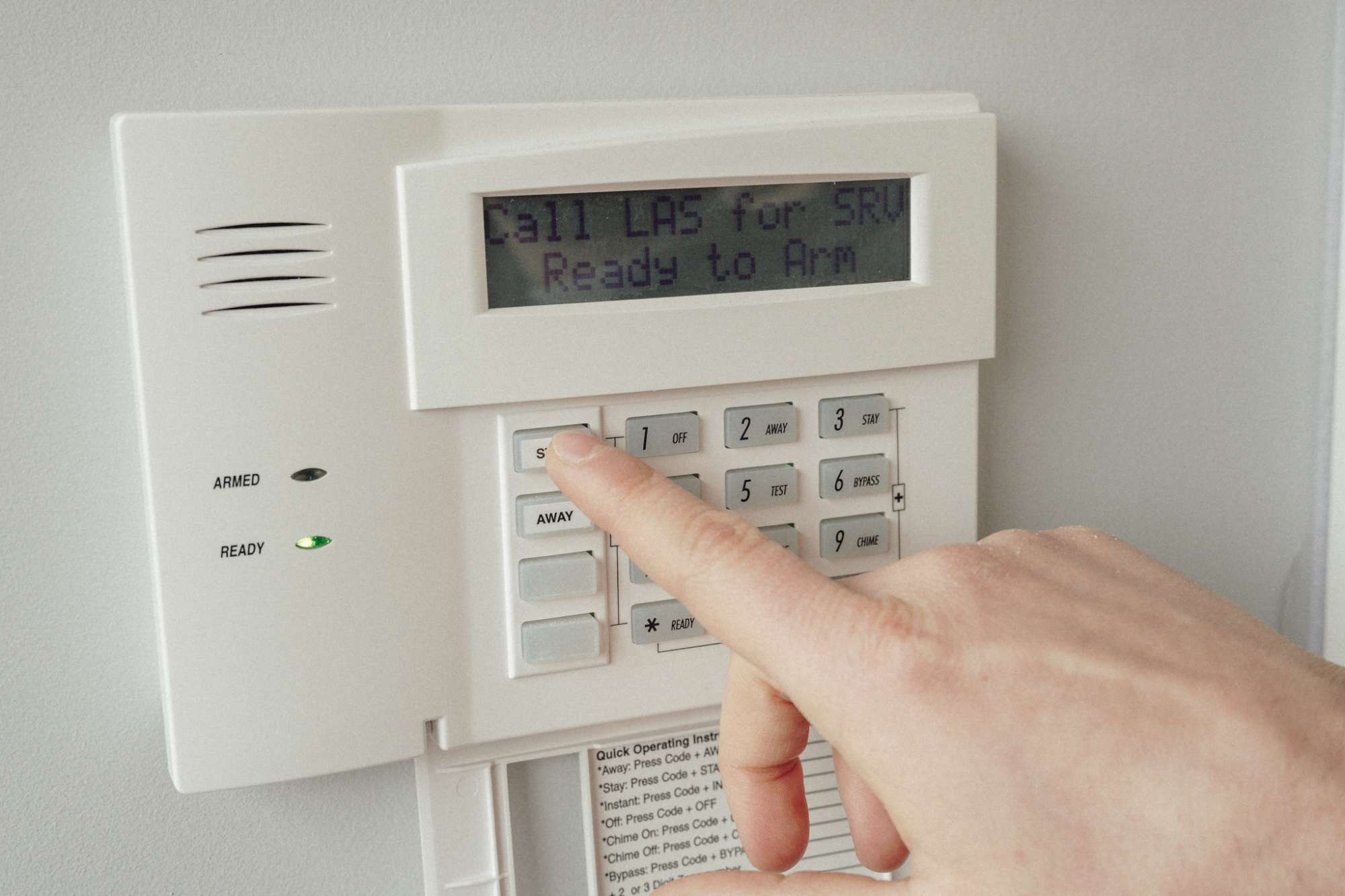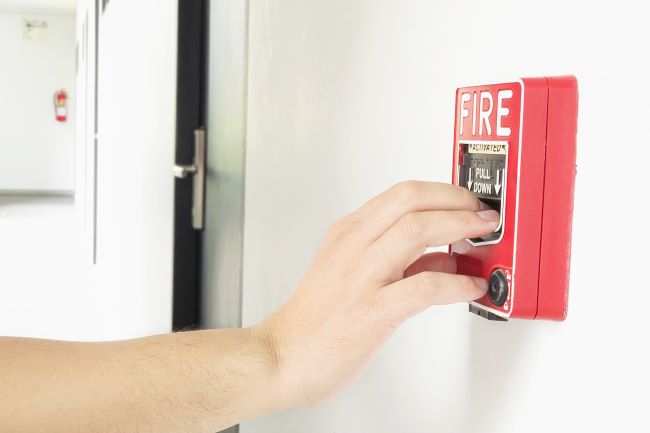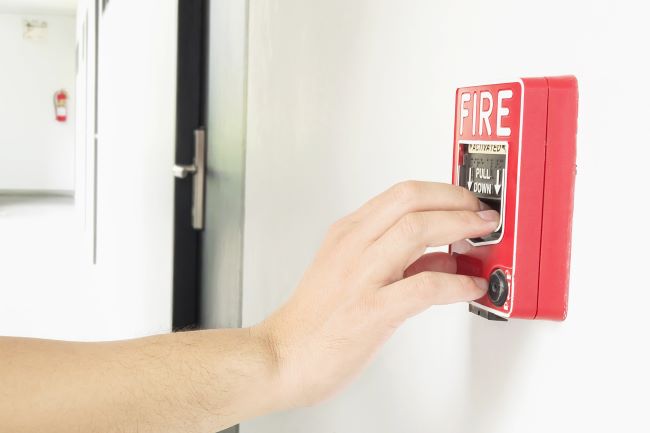A Manual Fire Detection System relies on human intervention to identify fires. Users activate the system by manual call points or fire alarms.
Fire safety is critical in protecting lives and properties. Manual Fire Detection Systems serve as an essential component of a building’s overall safety strategy. They require individuals to notice signs of fire – such as smoke or flames – and then respond by triggering the alarm manually.
Typically, this involves breaking glass to activate a call point, which sends a signal to alert occupants and emergency services. These systems are simple to implement and are often found in conjunction with automatic detection systems to provide a comprehensive safety solution. They are especially useful in small businesses or buildings where sophisticated systems are not feasible. Ensuring all occupants are familiar with the system’s operation is crucial for the effectiveness of manual detection.

Credit: waynealarm.com
The Importance Of Manual Fire Detection
Manual fire detection plays a crucial role in safeguarding lives and property. Unlike automated systems, manual fire detection requires human intervention to identify and respond to fires. Such systems are vital, especially in areas where technology cannot fully replace the keen senses and judgment of people.
Why Quick Fire Detection Matters
Speed is essential when it comes to fire outbreaks. The faster a fire is detected, the quicker the response, potentially saving lives and minimizing damage. Quick fire detection ensures that emergency services can be alerted immediately, facilitating a rapid evacuation and firefighting response.
- Reduces harm to individuals and property.
- Increases the chances of extinguishing the fire early.
- Helps prevent the spread of fire to surrounding areas.
The Role Of Manual Systems In Safety
Manual systems serve as an essential safety layer. In buildings without advanced detection technologies, manual alarms and detection methods are primary tools for alerting occupants. They provide an immediate means of communication during an emergency.
| Feature | Benefit |
|---|---|
| Human observation | Can notice subtle signs of fire |
| Fire alarms and pull stations | Enable rapid alert to occupants and authorities |
| Simple to operate | Ensures ease of use in stressful situations |
Effective manual systems are often complemented by regular training and drills. Such practices ensure that all occupants are aware of how to act and whom to alert in case they detect a fire sign. This aspect is crucial in environments with high foot traffic such as schools, hospitals, and shopping malls.
Types Of Manual Fire Detection Systems
Manual fire detection systems are crucial in alerting individuals of a fire. These systems rely on human intervention to operate. Such systems are simple but effective. They work well in places where quick detection matters. Two common types include Pull Stations and Alarms and Manual Call Points.
Pull Stations And Alarms
Pull stations are found in many buildings. They are red boxes on walls. When someone sees a fire, they can pull a lever down. This action trips the fire alarm system. Loud alarms then sound throughout the building. Some key points include:
- High visibility: Often painted bright red.
- Simple operation: Just pull the lever down.
- Quick response: Alarms sound immediately.
These systems help ensure everyone knows when to evacuate.
Manual Call Points
Manual call points are similar to pull stations. They come with a glass panel or a plastic resettable element. Here’s a brief overview:
| Feature | Description |
|---|---|
| Design | Break glass or press button to activate. |
| Location | Installed near exits and hallways. |
| Identification | Clear signage indicating operation. |
These points ensure a person can quickly alert others of fire danger.
Key Components Of A Manual Fire Alarm System
The heart of any Manual Fire Alarm System lies in its key components.
They work hand in hand to ensure that in the event of a fire, safety is the top priority.
Let’s dive into the critical elements that make up this life-saving system.
Notification Appliances
Notification appliances are the audible and visible gadgets
that alert occupants about a fire. Here are their main functions:
- Bells and horns make loud noises.
- Strobes flash bright lights, especially in noisy areas.
- Speakers may give voice instructions.
These devices are installed in key areas to ensure everyone hears and sees the alarm.
Initiating Devices
The first step of a manual fire alarm starts at the initiating devices.
Check out what they include:
- Manual pull stations for people to trigger the alarm.
- Break glass stations as another manual option.
These tools need to be accessible and simple to use for quick activation.

Credit: www.telgian.com
Placement And Accessibility
When it comes to manual fire detection systems, placement and accessibility are crucial for safety. These systems rely on human action, so it’s essential they are easily reachable. Smart positioning can mean the difference between rapid and slow response times.
Strategic Location Criteria
To ensure effectiveness, there are specific criteria for placing manual detectors:
- Detection units must be near high-risk areas.
- Install devices at a consistent height, easily accessible by adults.
- Pathways to detectors need to be clear and unobstructed.
A table to illustrate placement standards:
| Area | Criteria |
|---|---|
| Common Rooms | Installation near exists and high-traffic zones |
| Corridors | Every 30 meters for accessibility |
| Stairwells | On each floor landing for swift detection |
Ensuring Access For All Individuals
Accessible design is not a luxury; it’s a necessity. Here’s how to make smoke detectors accessible:
- Keep devices within reach, not above 1.2 meters from floor level.
- Ensure clear visual and physical paths for wheelchair users.
- Incorporate audible alarms for those with visual impairments.
Accommodating all individuals creates a safer environment for everyone. Regular maintenance checks help keep systems functional and within reach for people who need them.
Maintenance Checks For Reliability
The manual fire detection system is a crucial safety feature. Its job is to protect lives and property. For peak performance, regular maintenance checks are key. This ensures the system works well in an emergency.
Routine Inspection
Inspecting your manual fire detection system often prevents failures. It is a simple yet vital step to ensure safety. Experts recommend a checkup every month. Here’s a quick guide to follow:
- Visual Checks: Look for obvious damage or obstructions.
- Accessibility: Ensure all manual call points are accessible.
- Labels and Signs: Check if signs and labels are clear and readable.
System Testing Protocols
Testing your system makes sure it responds when needed. Follow these steps for effective testing:
- Notify the alarm receiving center before testing.
- Perform a test by activating a call point.
- Check if the alarm sounds and the signal reaches the panel.
- Record the results in the fire safety logbook.
- Reset the system and inform the alarm center.
Training Personnel For Effective Response
An effective manual fire detection system depends not just on the technology employed, but equally on the readiness of personnel to respond in the event of a fire. Training employees is crucial for ensuring a swift and adequate reaction that could save lives and property. It involves comprehensive educational programs and realistic drills that simulate emergency scenarios.
Educational Programs
Providing thorough knowledge about fire safety is the foundation of preparing personnel. These educational programs cover:
- Fire theory explaining the different types of fires and how they spread.
- The importance of quick detection and how to operate manual fire alarms.
- Understanding the various classes of fire extinguishers and their appropriate use.
- Evacuation procedures and the significance of evacuation routes.
- Communication protocols during a fire event.
Drills And Role-playing Scenarios
Drills and role-playing provide hands-on experience. These activities include:
- Scheduled fire drills that help familiarize staff with evacuation routes.
- Role-playing scenarios that assign specific responsibilities to team members.
- Mock exercises for using different types of extinguishers on controlled fires.
- Emergency communication drills to ensure messages are effectively disseminated.
Such real-world practice boosts confidence and provides valuable feedback for improving response plans.
Legal And Code Compliance
Legal and Code Compliance is a critical part of ensuring the effectiveness of a Manual Fire Detection System. Property owners must meet specific standards for fire safety. This includes following local, state, and national regulations. Failing to comply can lead to legal consequences and, more importantly, can compromise safety.
Navigating Fire Safety Regulations
Staying on top of fire safety regulations is crucial for any building’s safety plan. These regulations can change, so regular updates are essential. They ensure that buildings are equipped to alert occupants quickly in case of a fire. Every manual fire detection system must pass rigorous inspections. These inspections check for proper installation and maintenance.
- Regular updates to your system are necessary to comply with the latest safety standards.
- Rigorous inspections verify the system’s functionality and adherence to regulations.
- Safety drills and training help occupants understand the system and respond correctly.
Adhering To National And Local Codes
Both national and local codes dictate the specifics of fire safety. These codes address issues like device placement, system testing, and maintenance. Buildings must follow codes such as the NFPA (National Fire Protection Association) standards. Local codes may have additional requirements.
| Code | Description | Frequency of Testing |
|---|---|---|
| NFPA | National standards for fire detection | Annual |
| Local Codes | Additional regional requirements | Varies by location |
Complying with both national and local codes not only ensures safety but also avoids penalties. Working with a certified fire safety professional ensures systems meet all requirements. Proper maintenance and documentation are key to demonstrating compliance.
- Professional assessment ensures correct system installation and function.
- Maintenance records provide proof of compliance and regular upkeep.
- Documentation of drills shows preparedness and training efforts.
Advancements In Manual Detection Technology
Keeping communities safe is a priority that never fades. One critical part is the evolution of fire detection systems. As technology advances, manual fire detection systems see new enhancements. These systems are vital for instances where automatic systems may not be available. They rely on human action for fire reporting. Let’s delve into some of the latest advancements that are making manual detection more effective and user-friendly than ever before.
Innovative Features In New Models
New models of manual fire detectors come packed with features that boost safety exponentially. Here’s what they include:
- Ergonomic designs make devices easier to use during emergencies.
- Guided instructions are now included to help people act quickly and correctly.
- Enhanced durability ensures devices withstand tough conditions.
- Luminous elements allow easy location in dim environments.
- “Break glass” points have tools attached for swift action.
Integrating Manual And Automatic Systems
Old separation lines between manual and automatic systems blur as they integrate more seamlessly. This integration brings quick communication and additional security layers.
| Integration Benefit | Description |
|---|---|
| Immediate Alerts | Manual activation sends instant notifications to connected automatic systems. |
| Dual Verification | Both systems work together to confirm fire incidents, reducing false alarms. |
| Wider Coverage | Blending systems offers a holistic approach and leaves fewer blind spots. |
Adopting both approaches ensures no call for help goes unheard and every emergency is attended to with utmost urgency and efficiency.
Real-life Incidents And Learnings
Incidents involving fire can teach us vital lessons. Lives and property get saved by quick detection. Early fire alerts allow prompt action. Stories of success and near-misses reveal much. We learn best practices for safety. Understanding these incidents helps improve manual fire detection systems.
Case Studies On Manual Detection Success
A manual fire alarm pull station proved life-saving in a city school. Quick thinking by a teacher led to early evacuation of over 500 students. Fire extinguishers in use suppressed flames before firefighters arrived.
A storeroom fire in a manufacturing plant was contained, thanks to alert workers. They noticed smoke and used the manual call point. Immediate action prevented a large-scale disaster and saved jobs.
Analysis Of Close Calls And Failures
In a local theatre, flames engulfed the stage during a performance. Late manual detection almost resulted in tragedy. This incident underlined the need for regular safety drills. It stressed the importance of clear evacuation routes.
| Incident | Issue | Lesson |
|---|---|---|
| Office Fire | Blocked manual call point | Ensure clear access to alarms |
| Warehouse Blaze | Delayed reaction | Train staff on quick detection |
Misplaced items hindered alarm access in one incident. Time lost increased damage. Regular safety checks now prevent obstruction.
Choosing The Right System For Your Premises
Protecting a property against fire requires careful thought. A manual fire detection system is crucial. It allows quick response to prevent tragedy. To find the best fit for your space, assess risks and compare system features. Select a system tailored to your location. It ensures both safety and compliance with regulations. Let’s explore how to choose wisely.
Assessment Of Fire Risk And Needs
Before selecting a system, assess the fire risk.
- Property size: Larger areas may need more detection stations.
- Occupancy: Buildings with more people need better coverage.
- Material risk: Flammable materials on-site increase danger.
- Layout complexity: More complex designs require additional planning.
Identifying these factors will guide your decision. Tailored solutions come from thorough assessments. Safety experts can assist with evaluations.
Comparing Systems: Pros And Cons
Different systems offer varied features. Balance benefits against limitations. Consider the table below:
| System Type | Pros | Cons |
|---|---|---|
| Basic Manual Call Points |
|
|
| Manual Alarm Stations with Indicators |
|
|
| Integrated Manual and Automatic Systems |
|
|
Choosing the right manual fire detection system requires informed decisions. Assess your premises and weigh system options. Consider risks, building size, and layout. Review system pros and cons. Safety exceeds cost concerns. Make an educated choice that ensures prompt fire detection. Secure your premises with the right manual fire detection system.
Public Education And Awareness
Understanding how to spot fires early can save lives.
The ‘Public Education and Awareness’ program aims to teach everyone these crucial skills.
Community Outreach Programs
Active community involvement is key to effective fire safety. Organizations should run programs that teach people about the risks and the steps they can take to prevent fires.
- Local fire department visits to schools
- Brochures and flyers in community centers
- Interactive fire safety workshops
- Annual fire safety weeks with demonstrations and drills
The goal is to ensure every household knows how to use a manual fire detection system.
Social Responsibility In Fire Safety
Fire safety is not just a personal concern but a social responsibility. Each member of the community contributes to the safety of others.
| Role | Action |
|---|---|
| Individuals | Check home detection systems monthly |
| Businesses | Provide training on fire safety |
| Educators | Integrate fire safety in curriculum |
| Property Managers | Ensure proper signage and equipment maintenance |
Together, we create a community shielded from the blaze.

Frequently Asked Questions On Manual Fire Detection System
What Is Manual Fire Detection System?
A manual fire detection system requires human intervention to identify and alert others about a fire, typically through pull stations or manual call points.
What Is The Difference Between A Manual And An Automatic Fire Detection System?
A manual fire detection system requires human intervention to activate alarms, whereas an automatic system detects fire or smoke and triggers alerts independently.
What Are The 4 Types Of Fire Detection Systems?
The four main types of fire detection systems are heat detectors, smoke detectors, flame detectors, and gas detectors. These systems identify fire presence through temperature changes, smoke particles, visible flames, or emitted gases.
How Can We Detect Fire Manually?
To manually detect fire, look for smoke, assess heat sources, and smell for burning. Check for unusual warmth on walls and use sight for flames or smoke signals. Always stay alert for fire signs.
Conclusion
Embracing a manual fire detection system offers simplicity and reliability in critical moments. It’s a straightforward safety solution that everyone should consider. Remember, preparedness can make all the difference. Ensure your space is equipped and everyone is trained to react efficiently.
Safeguarding lives and property is paramount—don’t delay in installing this essential protection.

I’m Abdus Sobur, a highly skilled and professional Fire Safety Officer with a passion for safeguarding lives and property. Over the course of my career, I’ve conducted numerous successful fire safety audits, earning a reputation for excellence in ensuring public safety.
In addition to my role as a Fire Safety Officer, I’m also dedicated to raising awareness about the importance of fire safety. Through my blog, I share insights into the functions of different fire safety equipment, aiming to empower individuals with the knowledge they need to protect themselves and their communities.
I’m driven by a deep commitment to promoting fire safety awareness and preventing fire-related incidents.

